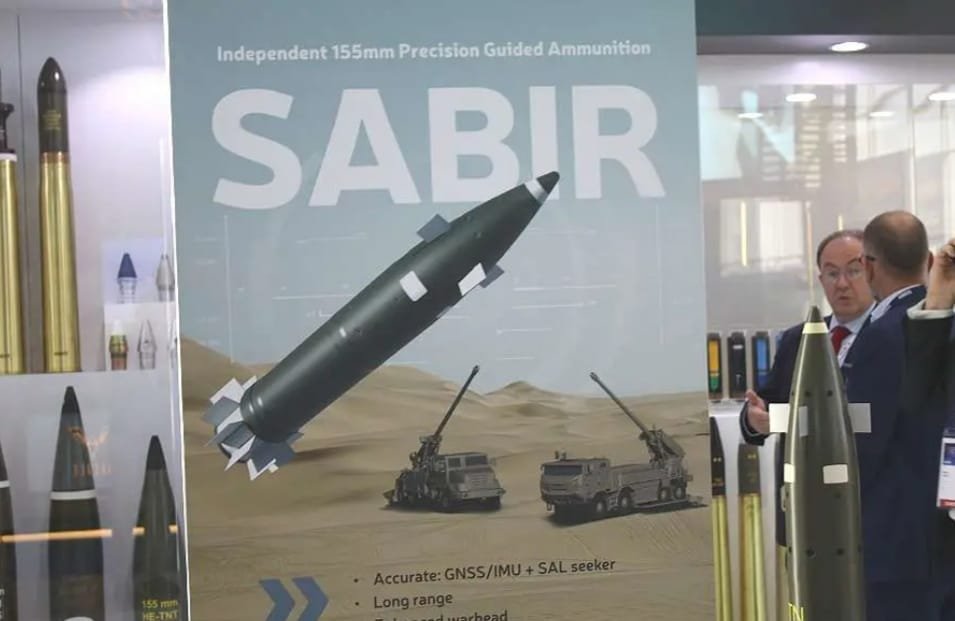
KNDS Announces Collaboration with Saudi Defense Industry for SABIR Guided Artillery Ammunition
During the World Defense Show 2024 in Riyadh, Saudi Arabia, KNDS revealed its partnership with the Saudi defense industry to develop the SABIR guided artillery ammunition, a strategic step aligned with Saudi Vision 2030. The Kingdom of Saudi Arabia (KSA) is on a mission to localize 50% of its defense expenditures by 2030, and the SABIR project is a pivotal move towards achieving independence in ammunition production.
The SABIR artillery ammunition, inspired by the French Katana ammunition’s technology, is designed to be fired from all 52 caliber guns, maintaining high combat readiness, all-weather capability, and cost efficiency. Its unique warhead allows for close support within 100 meters of friendly forces and can engage a variety of targets, including vehicles, troops, and buildings, thanks to its versatile multi-function fuze.
Unlike the version being developed for the French Army, the Saudi-produced SABIR will boast a range of 45 km from a 52-calibre artillery system. Its advanced guidance system combines an inertial platform with a satellite positioning receiver capable of utilizing all global navigation satellite systems (GNSS), enhancing its precision beyond the capabilities of its French counterpart.
This collaboration not only marks a significant step towards Saudi Arabia’s goal of self-reliance in defense production but also demonstrates international cooperation in advancing military technology and capabilities.
The Katana artillery ammunition is a state-of-the-art guided munition developed by Nexter, a leading French defense company known for its innovation in the armaments industry. Designed to be compatible with all 52 caliber artillery systems, the Katana ammunition exemplifies a leap forward in artillery capabilities, offering unparalleled precision and flexibility on the battlefield. It is engineered to maintain the high combat readiness and efficiency of traditional artillery while significantly enhancing accuracy and reducing collateral damage.
The Katana’s guidance system incorporates a hybrid navigation approach, combining Global Navigation Satellite System (GNSS) and an Inertial Measurement Unit (IMU) to ensure a high level of accuracy, with a Circular Error Probable (CEP) of less than 10 meters. Additionally, an optional semi-active laser seeker can be integrated to achieve even greater accuracy, enabling the munition to hit targets with metric precision.
The Katana ammunition is particularly noted for its multi-functional capabilities, featuring a specialized warhead that can be used in close support situations within 100 meters of friendly forces. This capability is crucial for modern combat scenarios where precision is paramount to avoid friendly fire incidents and minimize civilian casualties. The ammunition can effectively engage a wide range of targets, including vehicles, troops, and fortified positions, thanks to its multi-function fuze that can be programmed for airburst, impact, or delay detonation. This versatility allows for the engagement of targets in cover or entrenched positions, making the Katana a highly adaptable and effective tool for modern armies. With a maximum range between 30km to 60km depending on the version, the Katana offers the tactical flexibility needed to address a variety of combat situations, making it a valuable addition to any military’s arsenal.
In December 2020, the first test of the Katana smart artillery ammunition was conducted in Sweden, showcasing its advanced flight control capabilities. This initial testing phase marked a significant milestone in the development program of the Katana, highlighting its precision and marking its readiness for further operational testing and deployment.
The tests were carried out using a 155mm CAESAR self-propelled howitzer, during which the Katana ammunition demonstrated exceptional maneuverability. The Canard Actuation Systems (CAS) were deployed precisely as planned, allowing the shell to follow an optimized trajectory. This not only confirmed the effectiveness of the shell’s trajectory control system under the demanding conditions of 155mm artillery fire but also indicated a potential increase in firing range compared to traditional ballistic trajectories. Nexter Munitions, the entity behind the development of Katana, has validated its control over this advanced technology..


